Golden-winged Parakeet
Also known as:
Golden-fronted or Tuipara Parakeet (B.c. tuipara), Rio Negro Parakeet (B.c. tenuifrons)
Also known as:
Golden-fronted or Tuipara Parakeet (B.c. tuipara), Rio Negro Parakeet (B.c. tenuifrons)
DID YOU KNOW?
The Golden-winged Parakeet has been observed feeding on algae and snails from freshwater when water levels are low in the dry season.

Brotogeris

chrysoptera
Size:
16 cm (6.2 in)
Weight:
64-80 g (2.2-2.8 oz)
Subspecies including nominate:
five: B.c. chrysoptera, B.c. tuipara, B.c. chrysosema, B.c. solimoensis, B.c. tenuifrons
Colour Adult:
B.c. chrysoptera: Both adults yellow/green; frontal band black/brown; chin orange/brown; orange primary coverts. Beak horn-coloured. Eye ring bare and white. Eye dark brown.
B.c. tuipara: Both adults orange thin frontal band and chin spot; side tail feathers edged with yellow.
B.c. chrysosema: Both adults yellow/orange forehead and lores; chin spot orange; yellow primary coverts; larger.
B.c. solimoensis: Both adults as in chrysopterus, but frontal band paler and red/brown; chin spot yellow/brown.
B.c. tenuifrons: Both adults as in tuipara, but with orange frontal band minimal or absent.
Colour Juvenile:
B.c. chrysoptera: As in adults but duller; green primary coverts. Upper mandible brown.
Call:
Flight calls harsh and scratchy notes repeated quickly up to six times. Also high pitched notes and softer, babbling sounds.
More Information:
Content Sources:
CITES
BirdLife International
Cornell Lab of Ornithology/Birds of the World
Parrots: A Guide to Parrots of the World, Juniper and Parr, 1998
Parrots of the World, Forshaw and Cooper, 1977. 2010 edition
Lexicon of Parrots, Thomas Arndt.
Parrots of the World, Forshaw, 2006.
Parrots in Aviculture, Low, 1992.
Captive Status:
Uncommon in captivity.
Longevity:
20+ yrs
Housing:
Aviary or suspended cage, minimum length 2 m (6.5 ft).
Diet:
Fruit such as: apple, pear, banana, orange, cactus fruits, pomegranate, forming about 30 percent of diet; vegetables (if taken) such as: carrot, celery, green beans and peas in the pod; fresh corn; green leaves such as: Swiss chard, lettuce, sowthistle, dandelion, chickweed; spray millet; small seed mix such as: canary, millet, and smaller amounts of oats, buckwheat, safflower and hemp; soaked and sprouted sunflower seed; cooked beans and pulses, boiled maize, and complete kibble.
Enrichment:
Occasional bathers. Provide bird-safe chew materials (unsprayed branches, pine cones, fir and elder stems). Also wooden and vegetable tanned leather toys.
Nest Box Size:
Provide several nest boxes. Diameter 6-7″ (15.2-17.8 cm).
Clutch Size:
3-4
Fledging Age:
Likely 7 weeks.
Hatch Weight:
—
Peak Weight:
—
Weaning Weight:
—
World Population:
Unknown but described as common, decreasing.
IUCN Red List Status:
Least Concern
CITES Listing:
Appendix II
Threat Summary:
Relatively little trade. Is considered to have a medium dependency on forest habitat and tree cover is estimated to have declined by 11.5% within its range over the past three generations. Therefore it is tentatively suspected that this may have led to a 1-19% decline in the species’ population over the same period.
Range:
B.c. chrysoptera: Guianas, E Venezuela, and north of Amazon River in N Brazil, from Roraima east to Amapa.
B.c. tuipara: N Brazil, south of Amazon River in Para to NE Maranhao.
B.c. chrysosema: Rio Madeira and tributaries in Amazonas and N Mato Grosso, N Brazil.
B.c. solimoensis: Upper Amazon River in Codajas and Manaus districts, Amazonas, N Brazil.
B.c. tenuifrons: Upper Rio Negro at Santa Isabel and confluence of Rio Cauaburi, Amazonas, N Brazil.
Habitat:
Reported up to 1200 m (3936 ft) in cloud forest in Venezuela, however, mainly seen in lowland rainforest and Surinam savannas.
Wild Diet:
Feeds on nectar of Noranthea, Inga laterifolia, Erythrina amazonica, Virola surinamensis, Tabebuia serratifolia, Pithecellobium pedicellare, Bertholletia excelsa, Allantonia lineata and possibly Micropholis melinoneana; also green seed of Cecropia miparia, seed of Alibutia edulis and Bombacaceae, seed and pulp of Ficus and Sterculia excelsa, fruit of Astrocaryum, berries of Trema micrantha, and surface algae, insects and snails in pools.
Ecology and Behaviour:
Social; found in small flocks of 8-16 birds outside of breeding season. Also seen in larger groups of up to 100 on fruiting trees. Roosts communally in tree cavities or arboreal termitaria.
Clutch and Egg Size:
3-4 eggs, 23.0 x 18.0 mm (0.9 x 0.7 in)
Breeding Season:
February through November depending on location; nest is in tree cavity or arboreal termitarium.
Related Links:
—
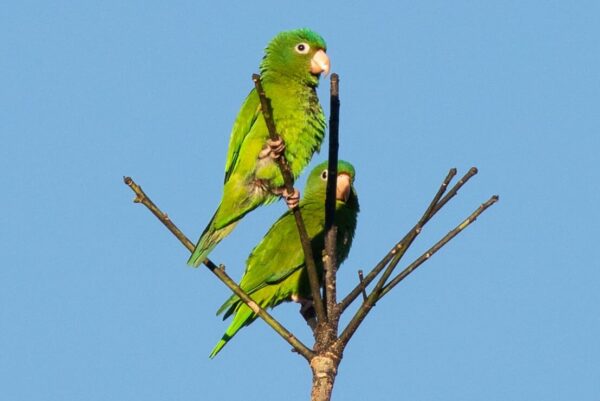
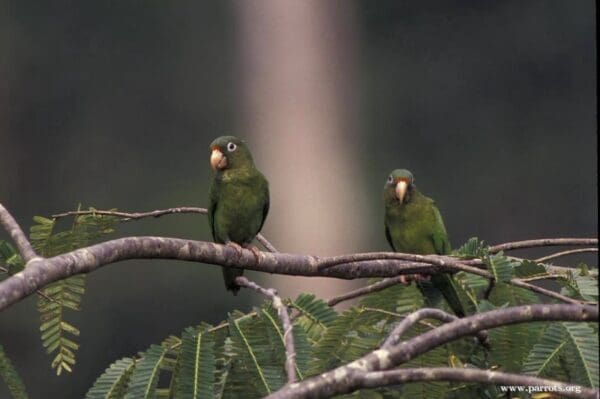
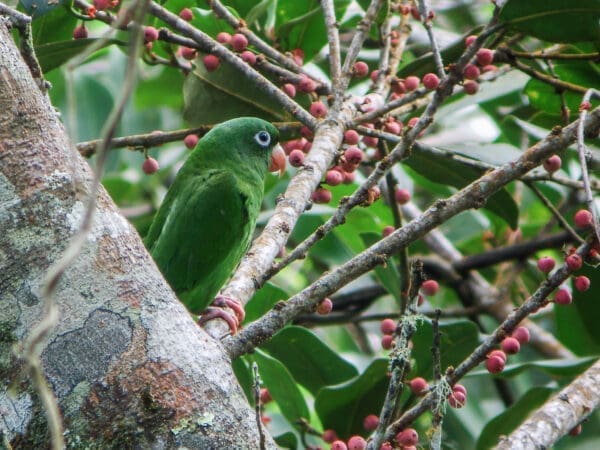
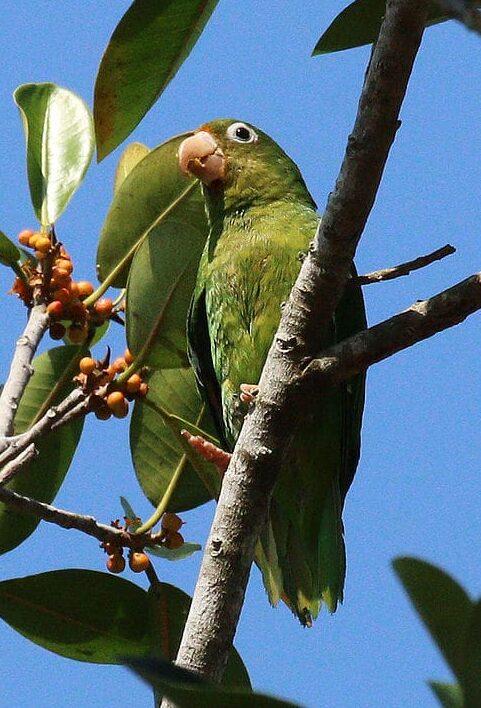
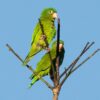
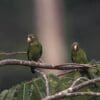
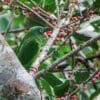
![© Charles J. Sharp [CC BY-SA 4.0] via Wikimedia Commons A wild Golden-winged Parakeet perches on a branch](https://parrots.org/wp-content/uploads/2023/01/wpt_Golden-winged-Parakeet_1379-3-e1731705262605-100x100.jpg)